Abstract
The intraperitoneal (i.p.) and intragastric (i.g.) mouse approximate 50% lethal dose values (ALD50S) were determined for 15 food and clinical isolates of Listeria monocytogenes. Although all strains gave i.g. ALD50S comparable to or less than their i.p. ALD50S, the i.g. feeding of most strains produced more deaths within the first 3 days of the 6-day test than did i.p. injection. ALD50S ranged from 50 to 4.4 x 10(5) cells with approximately 1-log 95% confidence intervals. Of five strains tested by suspension in milk or by growth in milk, none gave i.g. ALD50S that were lower than those of washed cells. Results with 10- to 21-g mice supported the use of 15-g mice for i.g. testing; 21-g mice were more resistant to i.g. infection. These results indicate that i.g. feeding permits an evaluation of the role of the carrier (such as milk) in the determination of listerial virulence, permits strain characterization by i.p. and i.g. ALD50S, and emphasizes a potentially more rapid infection when the bacterium is introduced i.g.
Full text
PDF
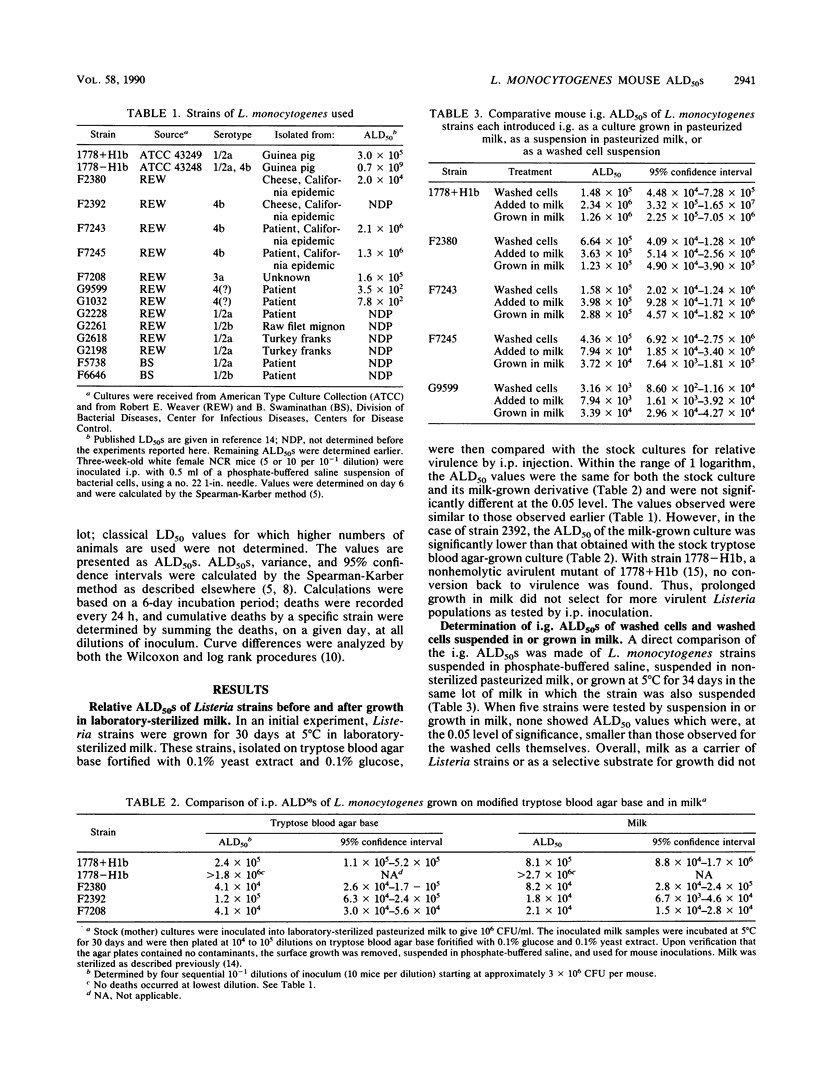
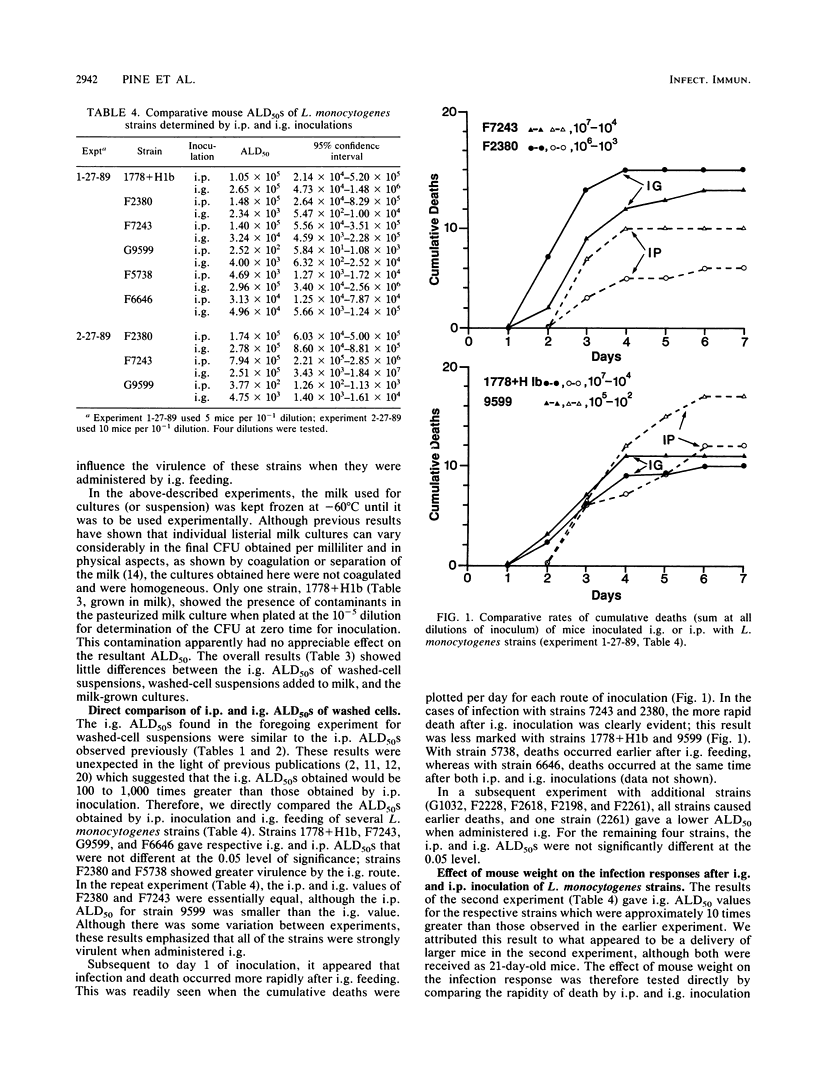
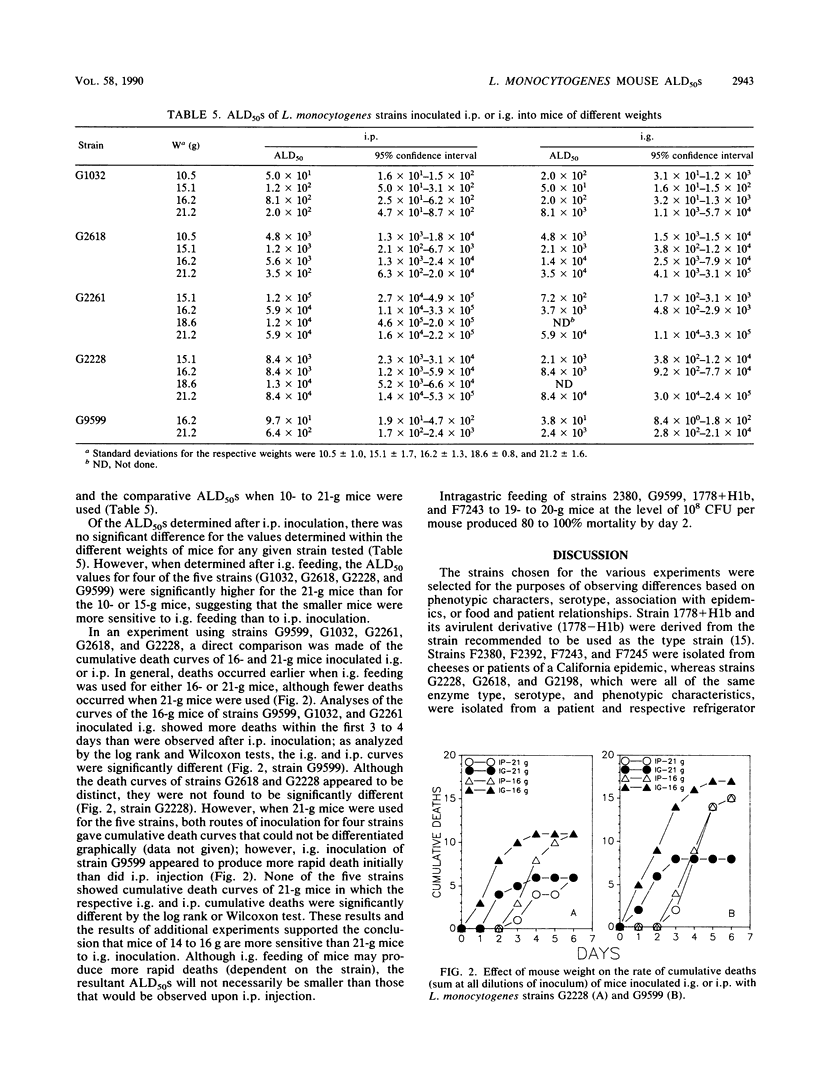
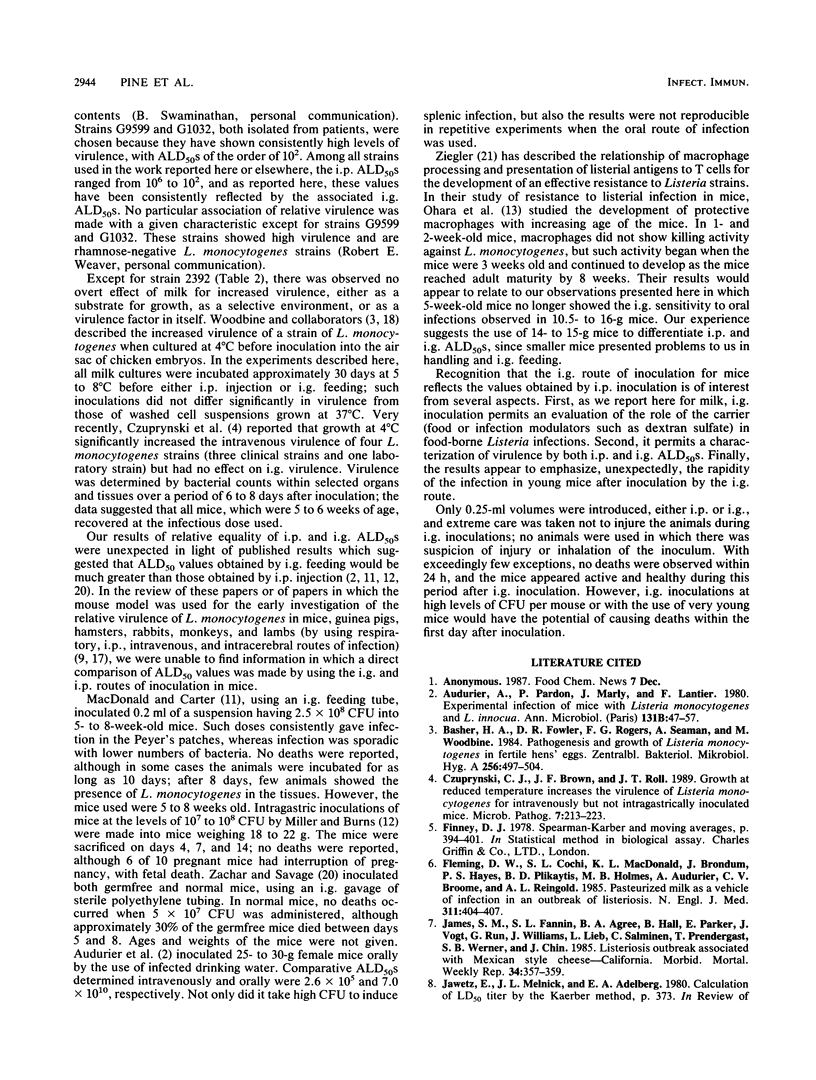
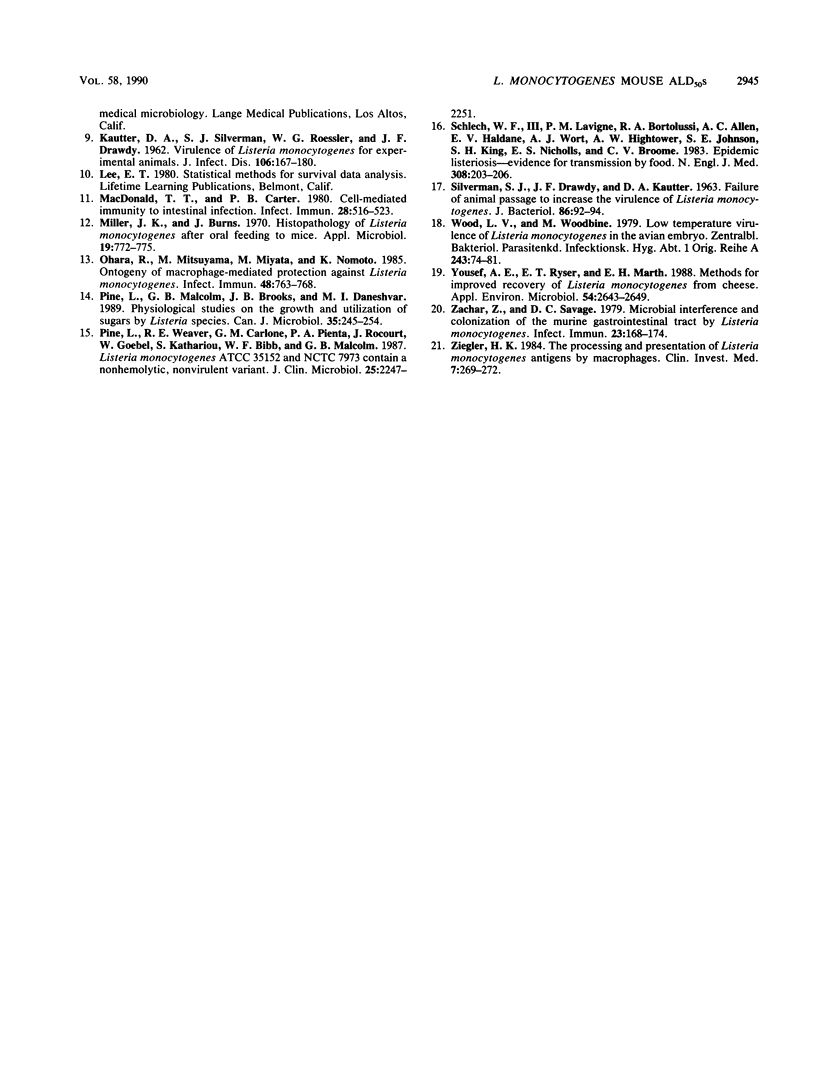
Selected References
These references are in PubMed. This may not be the complete list of references from this article.
- Audurier A., Pardon P., Marly J., Lantier F. Experimental infection of mice with Listeria monocytogenes and L. innocua. Ann Microbiol (Paris) 1980 Jul-Aug;131B(1):47–57. [PubMed] [Google Scholar]
- Czuprynski C. J., Brown J. F., Roll J. T. Growth at reduced temperatures increases the virulence of Listeria monocytogenes for intravenously but not intragastrically inoculated mice. Microb Pathog. 1989 Sep;7(3):213–223. doi: 10.1016/0882-4010(89)90057-0. [DOI] [PubMed] [Google Scholar]
- Fleming D. W., Cochi S. L., MacDonald K. L., Brondum J., Hayes P. S., Plikaytis B. D., Holmes M. B., Audurier A., Broome C. V., Reingold A. L. Pasteurized milk as a vehicle of infection in an outbreak of listeriosis. N Engl J Med. 1985 Feb 14;312(7):404–407. doi: 10.1056/NEJM198502143120704. [DOI] [PubMed] [Google Scholar]
- MacDonald T. T., Carter P. B. Cell-mediated immunity to intestinal infection. Infect Immun. 1980 May;28(2):516–523. doi: 10.1128/iai.28.2.516-523.1980. [DOI] [PMC free article] [PubMed] [Google Scholar]
- Miller J. K., Burns J. Histopathology of Listeria monocytogenes after oral feeding to mice. Appl Microbiol. 1970 May;19(5):772–775. doi: 10.1128/am.19.5.772-775.1970. [DOI] [PMC free article] [PubMed] [Google Scholar]
- Ohara R., Mitsuyama M., Miyata M., Nomoto K. Ontogeny of macrophage-mediated protection against Listeria monocytogenes. Infect Immun. 1985 Jun;48(3):763–768. doi: 10.1128/iai.48.3.763-768.1985. [DOI] [PMC free article] [PubMed] [Google Scholar]
- Pine L., Malcolm G. B., Brooks J. B., Daneshvar M. I. Physiological studies on the growth and utilization of sugars by Listeria species. Can J Microbiol. 1989 Feb;35(2):245–254. doi: 10.1139/m89-037. [DOI] [PubMed] [Google Scholar]
- Pine L., Weaver R. E., Carlone G. M., Pienta P. A., Rocourt J., Goebel W., Kathariou S., Bibb W. F., Malcolm G. B. Listeria monocytogenes ATCC 35152 and NCTC 7973 contain a nonhemolytic, nonvirulent variant. J Clin Microbiol. 1987 Nov;25(11):2247–2251. doi: 10.1128/jcm.25.11.2247-2251.1987. [DOI] [PMC free article] [PubMed] [Google Scholar]
- Schlech W. F., 3rd, Lavigne P. M., Bortolussi R. A., Allen A. C., Haldane E. V., Wort A. J., Hightower A. W., Johnson S. E., King S. H., Nicholls E. S. Epidemic listeriosis--evidence for transmission by food. N Engl J Med. 1983 Jan 27;308(4):203–206. doi: 10.1056/NEJM198301273080407. [DOI] [PubMed] [Google Scholar]
- Wood L. V., Woodbine M. Low temperature virulence of Listeria monocytogenes in the avian embryo. Zentralbl Bakteriol Orig A. 1979 Mar;243(1):74–81. [PubMed] [Google Scholar]
- Yousef A. E., Ryser E. T., Marth E. H. Methods for improved recovery of Listeria monocytogenes from cheese. Appl Environ Microbiol. 1988 Nov;54(11):2643–2649. doi: 10.1128/aem.54.11.2643-2649.1988. [DOI] [PMC free article] [PubMed] [Google Scholar]
- Zachar Z., Savage D. C. Microbial interference and colonization of the murine gastrointestinal tract by Listeria monocytogenes. Infect Immun. 1979 Jan;23(1):168–174. doi: 10.1128/iai.23.1.168-174.1979. [DOI] [PMC free article] [PubMed] [Google Scholar]
- Ziegler H. K. The processing and presentation of Listeria monocytogenes antigens by macrophages. Clin Invest Med. 1984;7(4):269–272. [PubMed] [Google Scholar]


